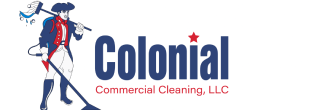In today’s fast-paced business world, maintaining a clean and organized office is crucial. Not only does it reflect professionalism, but it also fosters a healthier work environment, boosting productivity and morale. An office cleaning schedule serves as a roadmap to maintain a consistently clean workspace. This article delves into crafting an efficient and effective schedule tailored to your office’s specific needs.
Understanding the Importance of a Regular Schedule
An organized and methodical approach to cleaning eliminates guesswork and ensures all areas receive the attention they deserve. Regular cleaning prevents the buildup of dirt and reduces the spread of germs, ensuring a healthier environment for all. Moreover, a well-structured office cleaning schedule can extend the lifespan of office assets, from carpets to electronic equipment.
Assessing Your Office’s Unique Needs
Before drafting a schedule, it is essential to assess the unique needs of your office space. Larger corporate settings might require a different approach than smaller offices. For instance, corporate office cleaning services often emphasize deeper cleaning, given the higher footfall and more extensive facilities. On the other hand, if your office is within an educational facility, incorporating insights from educational institution cleaning can be beneficial. Recognize the distinct characteristics of your workspace and use them as a foundation for your schedule.
Daily Cleaning Tasks
Certain tasks require daily attention to maintain a clean and functional workspace:
- Emptying trash bins.
- Dusting and wiping down all surfaces, especially high-touch areas like doorknobs and light switches.
- Vacuuming carpets and mopping floors.
- Cleaning restrooms, replenishing toiletries, and ensuring functional plumbing.
- Cleaning and disinfecting communal areas, such as kitchens or break rooms.
Weekly Cleaning Tasks
While daily tasks address immediate cleanliness concerns, weekly tasks dive deeper:
- Deep cleaning of restrooms.
- Thorough dusting of all surfaces, including those harder to reach.
- Cleaning of windows and glass surfaces.
- Vacuuming upholstery and fabric surfaces.
- Disinfecting electronic devices, including phones and keyboards.
Monthly Cleaning Tasks
Monthly tasks tend to focus on areas that do not require frequent cleaning but are essential for the office’s overall hygiene:
- Deep cleaning carpets or professional floor cleaning.
- Dusting and cleaning light fixtures and ceiling fans.
- Inspecting and cleaning air vents.
- Deep cleaning the kitchen or break room, including appliances.
- Reviewing and replenishing cleaning supplies.
Flexibility and Adjustments
It is essential to remain flexible with your office cleaning schedule. During flu season, for example, you might want to increase the frequency of disinfecting high-touch areas. Similarly, if your office has had an event or a significant meeting, a more thorough cleanup might be necessary the next day. Monitoring and adjusting the schedule based on the office’s activities and needs ensures that the environment remains consistently clean.
Involving the Team
While professional cleaners will handle most of the intricate tasks, involving your office team can be beneficial. Assigning minor tasks, like ensuring their desks are organized at the end of the day or managing personal trash bins, fosters a sense of responsibility. When the entire team contributes, maintaining a clean workspace becomes a collective effort.
Utilizing Technology
In our digital age, there are numerous apps and software designed to help manage cleaning schedules. These tools can send reminders, allow for easy updates, and even offer insights into areas that might need more attention. Incorporating such technologies can streamline the cleaning process, making adherence to the schedule more efficient.
Review and Revision
Like all aspects of business operations, your office cleaning schedule will benefit from periodic reviews. As your business grows and evolves, so will its cleaning needs. Perhaps you have added more staff, expanded your office space, or incorporated new equipment. Regularly reviewing and revising the schedule ensures it remains relevant and effective.
Consideration for Different Materials
Every office space consists of a variety of materials, from wood and glass to metal and fabric. Each material requires specific care to maintain its quality and appearance. When creating your office cleaning schedule, ensure that tasks are categorized based on the type of material being cleaned. For instance, wood surfaces might need polishing, while metal surfaces could benefit from anti-rust treatments. Understanding and catering to these specific needs will extend the life of your office furniture and fixtures, ensuring they look pristine for longer.
Safety Protocols and Procedures
It is crucial to prioritize safety when implementing a cleaning schedule. This means ensuring that the cleaning agents used are not harmful and that any equipment is operated correctly. If the office staff is involved in any cleaning task, provide them with the necessary training and ensure they have access to gloves, masks, or any other protective gear if needed. Also, keep a well-stocked first-aid kit handy and easily accessible.
Seasonal Cleaning Adjustments
Different seasons might bring about different cleaning needs. For instance, during rainy seasons, the office might require more frequent floor cleaning due to mud and water being tracked in. In contrast, during pollen-heavy seasons, frequent window and surface cleaning might be necessary. Adjust your cleaning schedule based on the season to ensure that the office remains hygienic and presentable year-round.
Feedback Mechanism
Implement a feedback system where employees can voice their concerns or observations about the office’s cleanliness. Sometimes, certain areas might be overlooked, or a specific cleaning task might not be as effective as intended. By having a feedback mechanism in place, such issues can be swiftly identified and rectified. Not only does this promote a cleaner office, but it also makes employees feel valued and involved in the process.
Integrating Sustainability into Cleaning
As businesses become more environmentally conscious, integrating green practices into your office cleaning schedule can make a significant difference. This involves using eco-friendly cleaning products, reducing water wastage, and implementing recycling procedures for waste generated during cleaning. Opting for products that have fewer chemicals not only reduces the environmental impact but also ensures a healthier indoor environment for employees. Furthermore, promoting such sustainable practices can enhance your company’s image among stakeholders and clients, showcasing responsibility and foresight in your operations.
An office cleaning schedule is more than just a list of tasks; it is a strategic approach to maintaining a healthy, productive, and inviting workspace. While the tasks and their frequency are essential, flexibility, team involvement, and regular reviews are equally crucial. By crafting a comprehensive schedule tailored to your office’s specific needs, you pave the way for a workspace that shines in both cleanliness and efficiency.


